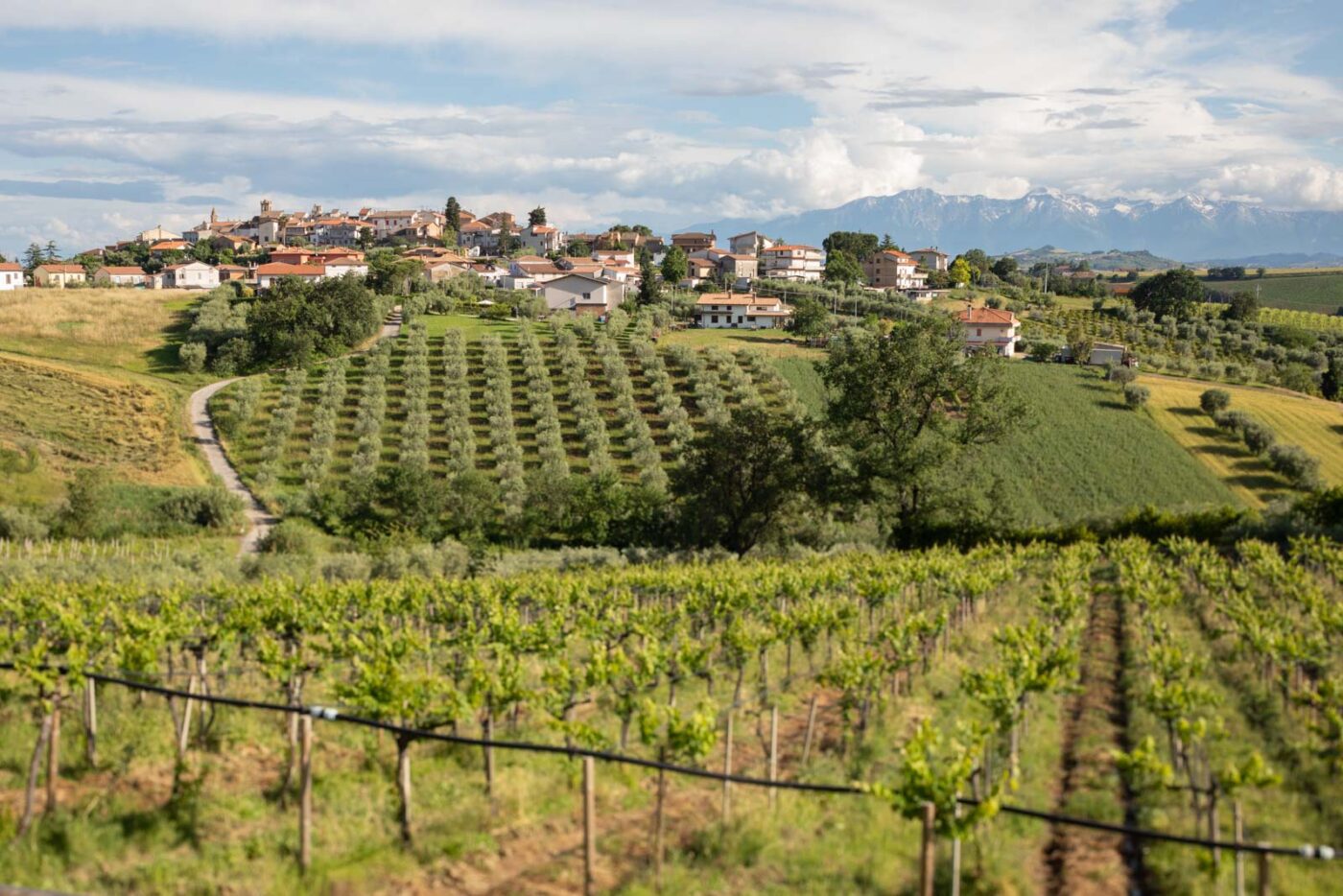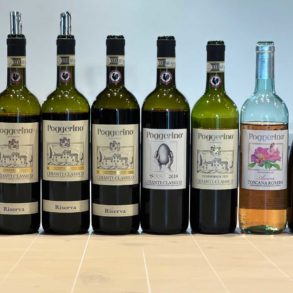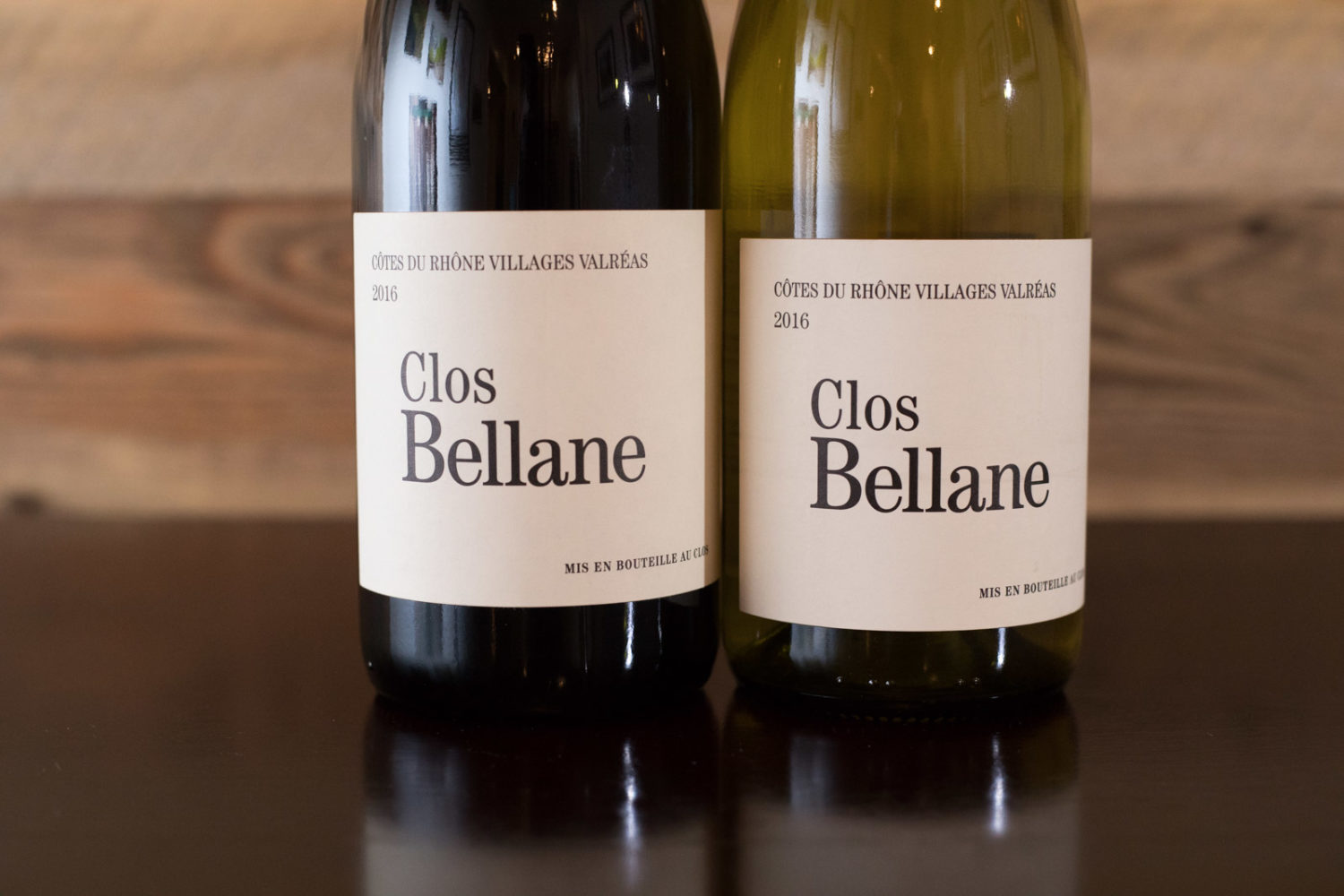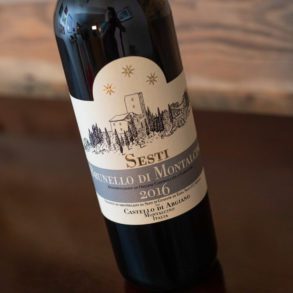Polyculture
If you are a lover of wine, you are also a lover of food. And if you are a lover of wine, you are most likely a lover of nature. These two facets intersect with polyculture, the planting of a variety of crops and the rearing of animals across a single farm. When done right, polyculture can build and enhance biodiversity to the benefit of vineyard ecosystems.
This icon indicates wineries that utilize polyculture.
 A typical scene in Abruzzo's countryside: vineyards, olive trees and other farms, crowned by sky-scraping mountains on the horizon. Pictured here is the village of Torano Nuovo, the vineyards of Emidio Pepe and the Apennine Mountains. ©Kevin Day/Opening a Bottle
A typical scene in Abruzzo's countryside: vineyards, olive trees and other farms, crowned by sky-scraping mountains on the horizon. Pictured here is the village of Torano Nuovo, the vineyards of Emidio Pepe and the Apennine Mountains. ©Kevin Day/Opening a BottleWhy it Matters
Throughout the Mediterranean region, where you find grape vines you often find olive groves. There is a great symmetry between the two, both in terms of what each crop requires and the purpose they serve at the table. But historically, olive and grape production were just one aspect of a multi-dimensional farm. Grains, fruits, beans, animal husbandry and other agricultural products not only helped provide for the table, but they helped diversify a farm's production and guard against singular devastating events.
Today, in the age of climate change, every winery in the world is looking to build resiliency, and many have found that instituting polyculture can be one way. Certain crops can be planted amidst the vine rows to help build nutrients in the soil and keep ground-level temperatures lower. Animals grazing amongst vineyards can reduce the need for mowing and herbicides, while also recycling nutrients. Orchards can provide a habitat for certain bird and bat species that can keep voracious insect species in check.
We've also seen many instances where polyculture is an important part of human culture — its endurance not only a sign of aiding biodiversity, but also preserving a tradition than can keep winemakers honest and true to their region's heritage.
We've selected the olive branch as the icon because olives (and olive oil production) is where we see polyculture most typically in Italy and France. Like grapevines, olive trees can handle stony, nutrient-poor soil, which allows their roots to dig deep for their basic needs. They also prefer warm to hot days with a large diurnal temperature swing to cool things off at night. This aids the ripening of olives (sound familiar, grape lovers?). Finally, they are also harvested around the same time of year, and as with grape harvests, timing is crucial.
Behind-the-scenes, this makes the balancing act of labor and production a small marvel to those of us who have never owned or managed a farm. This is an area of content (and travel) that we are eager to explore further.










